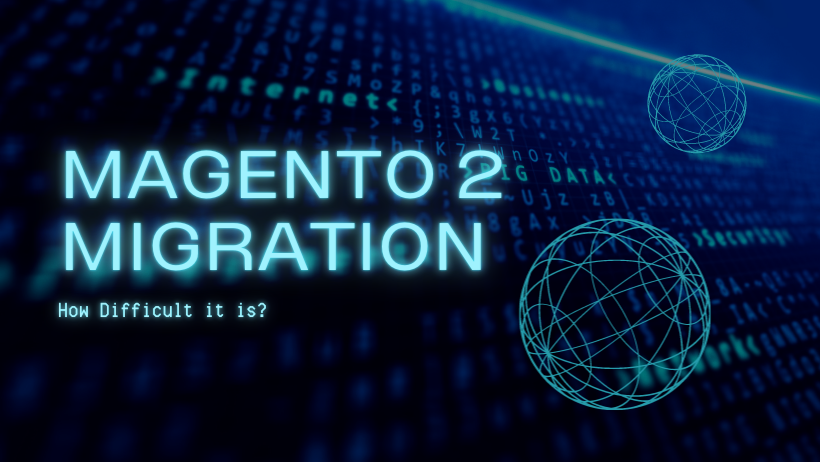Technology
Magento 2 Migration: How Difficult it is?

If you already have a physical business and wish to expand into the digital realm, Magento can help you get started. If you have been selling your products across numerous channels (online and offline) but have only recently adopted an Omni channel strategy. Or, you should read this if you are running an earlier version of Magento and are considering upgrading to the most recent version.
Then you must be prepared for the difficulties associated with transitioning to Magento 2. People may not realize how crucial it is to determine how to transfer data from the old system to the new system, which data should be transferred, and how much it will cost to do so. This article will discuss what Magento 2 migration is, and how difficult it is to migrate from Magento 2 to Magneto 1 along with its solution
What is Magento ?
Magento is an open-source and free e-commerce platform. It is an adaptable shopping cart solution that gives online businesses complete creative control over the style, content, and functioning of their online store. Magento’s creation is the responsibility of the Magento Foundation. Magento offers robust capabilities for marketing, SEO, and catalog management. It is the logo of the Magento Company.
Common Places’ e-commerce clients utilize Magento, a platform created by a global community of developers. Due to the scalability of Magento, a business that begins by selling a few products and having basic requirements may quickly expand to selling tens of thousands of products and having complicated requirements without switching platforms. It provides a vast selection of add-ons and skins that enhance the user experience.
The proprietor’s level of commercial acumen frequently determines the success of the online store configuration technique. Several aspects of the online store must be configured before opening for business. To obtain the desired functionality, more advanced programming will be required.
Magento is an open-source content management system that may be utilized as software by non-programmers. One of Magento’s significant features is its large and helpful community. However, the average person will eventually encounter an obstacle.
There are numerous circumstances in which modifying a Magento website may be necessary. This system can function reliably with minimal modification, even in its most basic version. When companies begin to integrate their systems with those of other organizations or introduce tens of thousands of new items, they frequently require the support of seasoned developers. For example, we have clients that desire additional dashboard layout alternatives. It is typical to be able to view products in quantities of 5, 25, and 50. One of our clients attaches great significance to the year 2000. Only a professional with a solid understanding of Magento and an awareness of best practices should significantly modify the functionality.
Experienced developers will tell you that speed is essential for online shopping. When doing extensive online shopping, the last thing anyone wants to deal with is waiting for the systems to reload. A large number of built-in features may overburden your server. Although we haven’t yet had a Magento client requiring many servers for their online store, I have no doubt that will change shortly.
Magento 1 theme doesn’t work on Magento 2
Unfortunately, you can’t take your current theme to Magento 2. You’ll have to find something to use in its stead. Before you even ask, yes, you will need to redo all of the alterations you’ve made to your storefront in the past.
You may eliminate a lot of this effort by investing in a pre-made theme. Consequently, all that remains is to set it up, do a trial run, and fine-tune it as required. The customization and transition processes can be sped up thanks to the pre-installed addons and Style Guides available for some themes considerably.
You need to find extensions with all the features you used to have
The M1 and M2 extensions are different from one another, much as the theme is. Some of the functions were included in Magento itself, while others required the use of additional third-party extensions.
And remember that there is always a silver lining, even if choosing new seams seems tedious at the time.
The migration process is a great opportunity to assess the state of your Magento store and pare it down to its essential parts. Since M2’s functionality is more robust, probably, you won’t need as many extras. In addition, your site’s overall performance is proportional to the number of modules you set up.
Finally, do you recall how difficult it was to deploy a brand new extension in Magento 1? Using Magento 2, you will see fewer compatibility issues and conflicts because it supports HTML5, LESS, and CSS3.
Additionally, Magento 2 themes load faster and have a more organized code structure, making performing better with such themes easier.
Final Words
Hopefully, this article will help developers to understand the exact meaning of Magneto and the problem causes of Magneto 1 theme working on Magneto 2 Theme as well as finding extensions with all the features you used to have. If you still need any queries, you can ask in the comments section.













